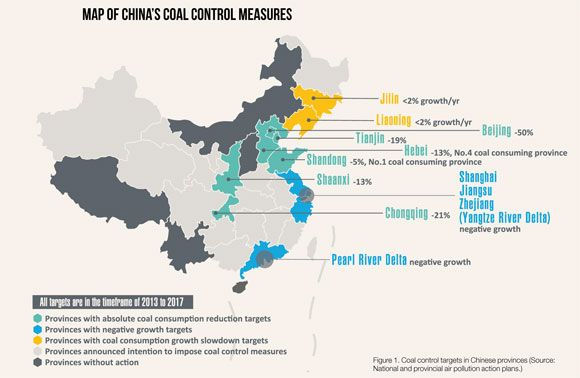Last year, renewable energy made up nearly 70 percent of new electric generation capacity additions in China. That figure would be more impressive if coal wasn’t the reigning supreme leader of China's energy landscape. It currently accounts for about 65 percent of the country’s energy mix.
But coal’s tight grip on the country may start to wane within a decade. By 2030, China will be dismantling its coal capacity, predicted Michael Liebreich, chairman of the advisory board for Bloomberg New Energy Finance, at the recent Renewable Energy Finance Forum Wall Street.

That bold prediction is backed up by the Chinese government’s recent calls for a war on pollution, which could mean a significant shift in coal consumption. The war will not be a quick one. China Daily recently reported that it would take until 2030 for Beijing to get back down to fine particulate matter levels that would comply with international safety standards.
So far, some of the efforts outlined to combat pollution involve shutting down smaller coal-fired power plants and banning imports of high-ash, high-sulfur coal (although China would still use lower-quality coal sourced from within the country). Other measures include putting more scrubbers on coal plants, rather than taking them offline all together.
Liebreich and BNEF are not alone in forecasting the end of coal domination in China. A recent report by Greenpeace, The End of China’s Coal Boom, found that six Chinese provinces have absolute coal consumption reduction targets that range from 5 percent to 50 percent by 2017 from 2012 levels. However, many of these provinces had rapid expansion in the use of coal up until 2011.

“The road away from coal is going to be long and challenging,” Greenpeace states in the report, “but it has started.”
Other forecasts are far more bearish on coal’s decline in China, especially in the short term. The International Energy Agency found last year that coal would continue to grow, albeit at a slower rate, through 2018. It also notes that coal gasification is increasing considerably in China. The U.S. Energy Information Administration also sees coal as the dominant source of electricity in China through 2040.
“Like it or not, coal is here to stay for a long time to come,” Maria van der Hoeven, executive director of EIA said in statement in December. “But it is equally important to emphasize that coal in its current form is simply unsustainable.”



